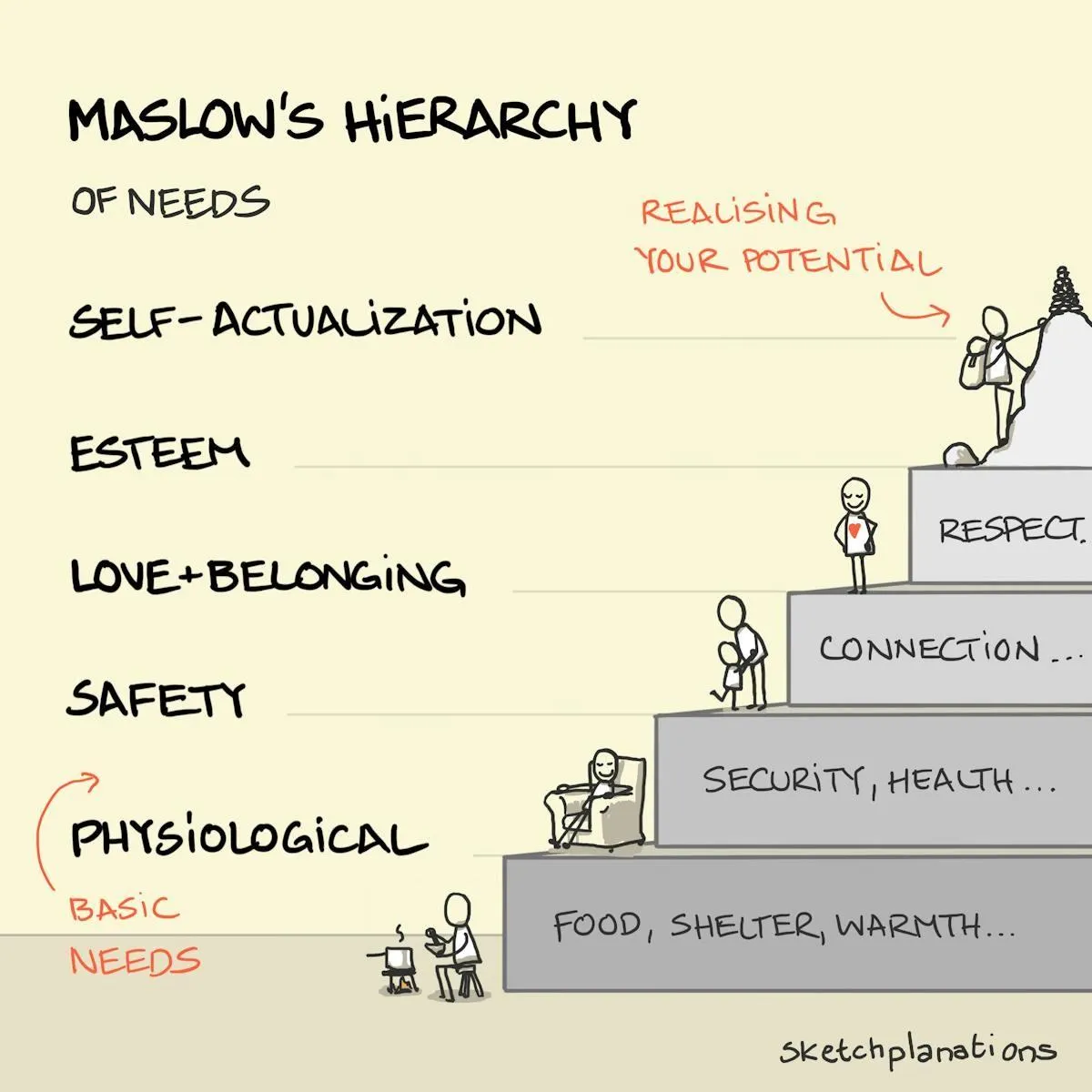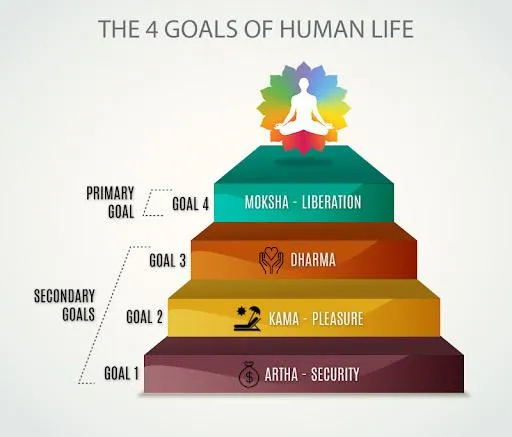If you haven`t yet checked out the previous post, begin here: "The Journey to Fulfillment: Exploring Life’s True Purpose”?
Maslow’s Hierarchy of Needs: A Modern Twist

In our quest for fulfillment, we often turn to frameworks like Maslow’s hierarchy of needs. Traditionally, this pyramid starts with basic needs like food and shelter, then moves up to safety, love, and esteem, before reaching self-actualization—the desire to become our best selves.
But what do we truly seek? Is it correct to put aside fulfilling our life purpose just by sitting on a full stomach and waiting to get a good job? Does Maslow’s pyramid still apply today, or does it need a modern twist?
The Upside-Down Pyramid: Starting with Purpose
Imagine beginning your journey not with survival, but with purpose. Instead of focusing on food, shelter, and safety, what if you grounded yourself first in your deeper meaning and mission in life? By understanding your inner self, everything else might naturally fall into place.
This concept is not new. Ancient texts like the Bhagavad Gita offer a similar perspective, “First achieve yoga (spiritual connection), and then your well-being will be looked after.” This mirrors the Bible’s wisdom: “First seek the kingdom of heaven, and everything else will be added unto you.”
Dharma and the Four Aims of Life

In Ayurveda, our purpose—our dharma—is the core of who we are. Each of us is a unique manifestation of the Universe, but over time, we feel disconnected from this unity. This sense of separation from the divine creates loneliness and a sense of alienation. Life, then, is about returning to a state of unity.
This is achieved through four primary aims of life, they offer a roadmap to fulfillment. These are so fundamental that every person is motivated to some extent by them. Artha (security and wealth) emphasizes acquiring what’s necessary for survival, while Kama (pleasure and desire) relates to enjoying life’s pleasures. Dharma (purpose and service) is about finding and living in alignment with our true purpose, and Moksha (liberation) represents the ultimate goal of spiritual liberation or union with the divine, transcending the cycle of birth and death (Samsara). While these aims are interconnected, true fulfillment comes when we align with our higher consciousness and transcend purely material desires.
Transitioning from one goal to another often represents a significant leap. Moving from the first to the second may seem natural, but progressing from the second to the third can feel like a barrier, as we begin to engage with spiritual matters while still driven by material desires or possibly by our family who may not understand our spiritual pursuits. All our human experiences in this life, which toss our awareness back and forth in the duality of excitement or depression, pleasure or pain, gain or loss, are the source of our unhappiness and problems.
I believe this is where our unique purpose becomes vital. Each of us has a unique path. This concept, whether viewed through Maslow’s self-actualization or Ayurveda’s goals, helps make sense of our journey.
As Sahara Rose reminds us, “Every single person has a unique Dharma and to remember yours is what we are here to uncover. The journey is as much a part of the destination; the remembrance of your soul’s quest is found and integrated as you release what you are not.”
The Buddha’s Path: Letting Go for TRUE Liberation
The life of Buddha serves as a powerful example of this process. At the heart of his journey was a profound realization: our attachments and desires are the root of our suffering. By letting go of these attachments—whether they’re rooted in wealth, relationships, or personal success—Buddha discovered true liberation.
But his enlightenment didn’t lead him to retreat from the world. Instead, he chose to stay and guide others. His wisdom wasn’t just theoretical; it was deeply practical, offering others a way to navigate their own struggles and find peace.
“Freedom is when you get your own Powers which are within you. You have got your own Powers. You have to be your own Guru. You must reach that point from where you guide yourself in such a way that the guiding lines become part and parcel of you. That means in your central nervous system, in your conscious mind, you must be the existence of the Spirit. This is what is the evolutionary process. This is what you have to achieve and all other talks are absolutely of no value. Let’s face it — there is no flowery talk needed for it. It’s a doing. All these talks and all these organizations, and everything, has no meaning of any kind. It does not empower you to be the Spirit.“ –H. H. Shri Mataji Nirmala Devi
Navigating Emotional Waves: The Art of Balance
Life is a series of emotional waves—moments of joy followed by shadows of doubt, surges of confidence countered by whispers of imposter syndrome, and bursts of energy that fade into fatigue. These cycles can be exhausting, leaving us questioning our worth, purpose, and direction. Yet, with each wave, there’s a return to a place of neutrality, stillness, and peace.
This isn’t a failure; it’s the essence of our evolution. Each emotional wave teaches us resilience, offering an opportunity to learn and grow. Over time, the process becomes less painful and we return to our center with greater ease. And who knows? Maybe one day, we won’t just navigate these waves—we’ll ride them with joy and inner peace, embracing the journey with open hearts and minds.
“Birds make great sky-circles of their freedom. How do they learn it? They fall and falling, they’re given wings” –Rumi
The Journey Within: True Fulfillment is an Inside Job
As Carl Jung wisely observed, “Who looks outside, dreams. Who looks inside, awakes.” True mental health involves confronting and understanding our struggles, not merely avoiding them. The key is to look inward and find that spark of true fulfillment.
Shri Mataji Nirmala Devi adds another layer to this: “Accept life as it is. As it is, whatever life is there, accept it. Don’t retaliate, don’t get angry, don’t get upset, just accept, and you’ll enjoy the same life which was irritating you. You will see the enjoying part of that, and it will be so beautiful the way you will see that you’ll get over all your problems, you’ll get over all your enemies, and a kind of a very fresh beautiful existence you’ll have.”
The Joy of the Journey: Rediscovering Simplicity
Albert Einstein once said, “The more I learn, the more I realize how much I don’t know.” In our quest for knowledge and success, we often lose sight of simplicity. We’re told that “knowledge is power,” but perhaps the true essence of life is learning to enjoy less—finding joy in the present moment, in the quiet stillness that often goes unnoticed.
The Bhagavad Gita offers a similar message:
“Life is a Challenge - Meet it
Life is a Gift - Accept it
Life is a Adventure - Dare it
Life is a Sorrow - Overcome it
Life is a Tragedy - Face it
Life is a Duty - Perform it
Life is a Game - Play it
Life is a Mystery - Unfold it
Life is a Song -Sing it
Life is a Opportunity - Take it
Life is a Journey - Complete it
Life is a Promise - Fulfill it
Life is a Love - Enjoy it
Life is a Beauty - Praise it
Life is a Spirit - Realize it
Life is a Struggle - Fight it
Life is a Puzzle - Solve it
Life is a Goal - Achieve it”
Is all of this truly necessary?
I don't know. Maybe, maybe not. Many things are not essential in life. What is important for you is something only you can know.
In a world that often pulls us away from our inner truth, we must learn to look within. Fulfillment starts with purpose. When we ground ourselves in our deeper calling, the rest of life—its challenges, triumphs, and joys—falls into place.
The path to true fulfillment is not a straight line, but a series of waves, each bringing us closer to the center of who we truly are. Embrace our inner spark and let it guide us with joy, balance, and a sense of unity with the universe.
Copyright 2024 Mihaly Vincze Bodywork - All rights Reserved
